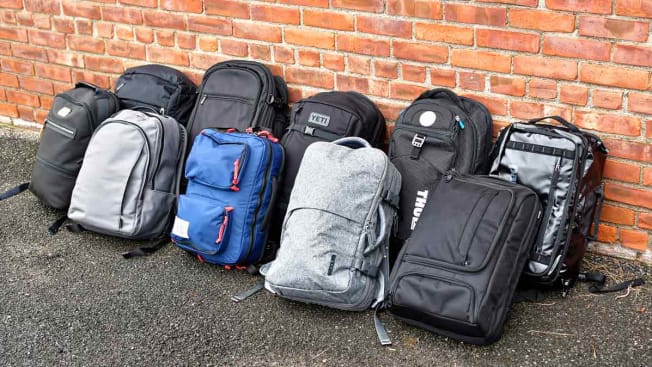Best Travel Backpacks
I evaluated 10 packs that can be stuffed under the seat in front of you on most airlines. The best of them do double duty as daypacks once you land, too.

According to United Airlines, I have over 700,000 lifetime miles aboard their aircraft. Most of them have not been for pleasure, alas, but for work as a freelance journalist.
If there’s any benefit to all those hours (months? years!) flying, it’s knowing how to pack and what to bring. Rule No. 1: Merino wool, because it’s comfy, not scratchy, and doesn’t retain body odors, which is key because the clothes you pack probably won’t see a washing machine for a while. Rule No. 2: Lay everything out beforehand. This allows you to “edit” what you pack—by sacrificing wants in favor of needs—and strategize about what to put where within your bag of choice, so it’s easier to locate that eyeshade, Nyquil, or novel when you’re exhausted and the cabin lights are out on your red-eye.
Which brings me to Rule No. 3: Never check a bag. Ever!
That means everything you take with you should fit in two bags—a roll-aboard and a “personal item,” airline parlance for the purse, briefcase, shoulder bag, or backpack that stays with you during the flight. Pulling off proper two-bag travel requires a combination of tactical savvy and the right gear. I’ve managed trips as long as two weeks by wearing hiking boots onto the plane (so they eat less room in my bags) and taking only one other pair of footwear—running shoes, which do triple duty for exercise, daily use, and slightly more “formal” wear when matched with jeans and a blazer.
As for the gear? A good roller bag is important, but it’s ultimately the personal item that can make or break your trip. That bag needs to offer maximum utility and flexibility, and to that end nothing beats a travel backpack. The genius of these bags is that they can accommodate way more stuff—and in a much more organized way—than a purse or briefcase. But some backpacks make better travel companions than others. That’s why I took a look at 10 of them. (See how I evaluated each of these travel backpacks, below.)
The Patagonia Black Hole Mini MLC easily accommodated all of my gear, proving that it's worthy of its name.
About These Bags
So what are the qualities of a hard-working travel backpack? All the bags we chose for this evaluation had to:
- Accommodate and logically organize everything you’d need to be comfortable/productive/entertained onboard the plane and whatever spillover there might be from your carry-on.
- Function as the go-to bag when you get to your destination, whether that be day hikes into the mountains or business meetings in a boardroom.
- Do double duty as a quick overnight bag, fitting a change of clothes and a second pair of sneakers or slippers.
- Wear comfortably on the back for long stretches of time.
- Fit (with a bit of creative shoving and squishing) within the roughly 9 x 10 x 17-inch space underneath the typical airline seat. (More on this later.)
In terms of price, the most expensive pack costs $300, while the AmazonBasics crept only slightly above $50. But the mean price of roughly $150 suggests that you don’t have to spend a fortune. Materials, carrying comfort, internal organization, and structure also varied widely among backpacks and did not necessarily correlate to price. And bigger isn’t necessarily better: Filling the largest pack to capacity could just leave you with a bag that is impossible to straight-jacket under the seat.















